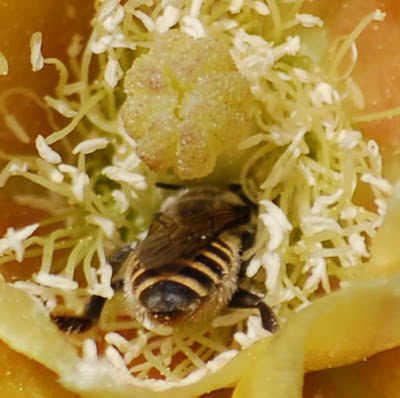Maybe She Will...Maybe She Won't
Popular thought says the spiders change color to match the flower they're on. Fun! This one was found in a neighbors yard and the color match was so precise the camera had to define where the flower started and the spider ended.
White crab spiders will sit in white Datura blossoms...yellow ones hide in...well...yellow blossoms.
Two theories exist. One is that when these spiders travel to a new location, a different flower of a different color, the spider's color will change in about a week. The other theory postulates that they simply assume the color of the flower they were hatched on.
Although crab spiders are fairly common, finding one might take some patience because they are often well camouflaged. If you want to find a crab/flower spider, try to think like a spider: Where would you sit if you wanted your prey to come to you?
|
Labels: datura, desert environment, desert photography, desert photos, flower fertilization, Mel Burke, photography, sexual activity












